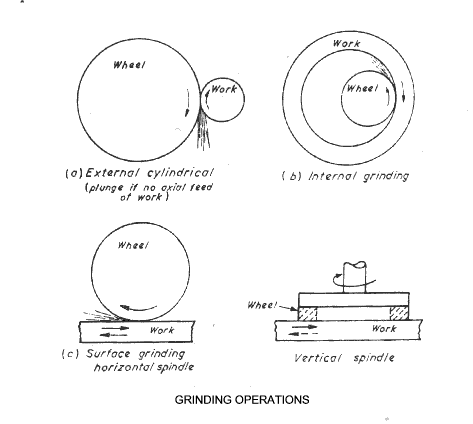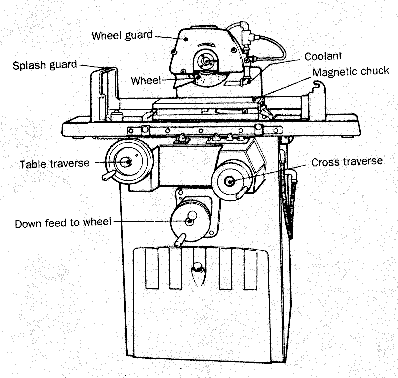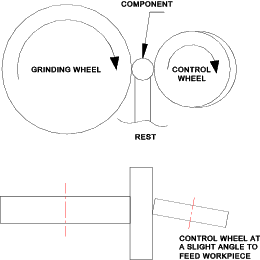|
|
|
Machining Grinding /Abrasive Machining
Abrasive Machining Abrasive machining uses hard non-metallic particles to machine the work surface. Relevant processes include grinding, honing, superfinishing / abrasive belt machining and honing. The first three processes uses abrasive particles (grit), rigidly held in a wheel, stone, or belt. Lapping is based on the abrasive particles being retained in a fluid. GrindingThe grinding process is used to produce a high surface finish with a close tolerance and for machining hard materials. The process is a variation of polishing using abrasive materials held together by an adhesive generally in the form of a solid wheel. The wheel is rotated at high speeds and the circumferential surface of the rotating wheel is brought into contact with the material being machined.
The grinding wheel variables including: abrasive material, bonding material, abrasive particle size etc are selected depending on: required surface finish, metal removal rate, material, wheel speed etc. Different Grinding Processes
Surface Grinder The surface grinder is used in the toolroom for the production of accurate flat surfaces. This machine has a similar layout to the horizontal milling machine but only removes small thicknesses of material on the grinding passes.
The Cylindrical Grinding Machine This machine is use to generate cylindrical surfaces and is similar to a centre lathe in appearance. The main difference is that the tool is replaced by a rotating grinding wheel. The Vertical Grinding Machine Information to be added... The Centreless Grinding machine This type of grinding machine is for pure cylindrical prism shapes which do not required mounting. The workpieces are fed through two parallel rotating wheels: a conventional grinding wheel and a rubberised regulating wheel. The regulating wheel is inclined at a slight angle to facilitate axial movement (like a screw thread).
|
Links Providing information on Grinding
|
|
This Page is being developed
Manufacturing IndexMachining


